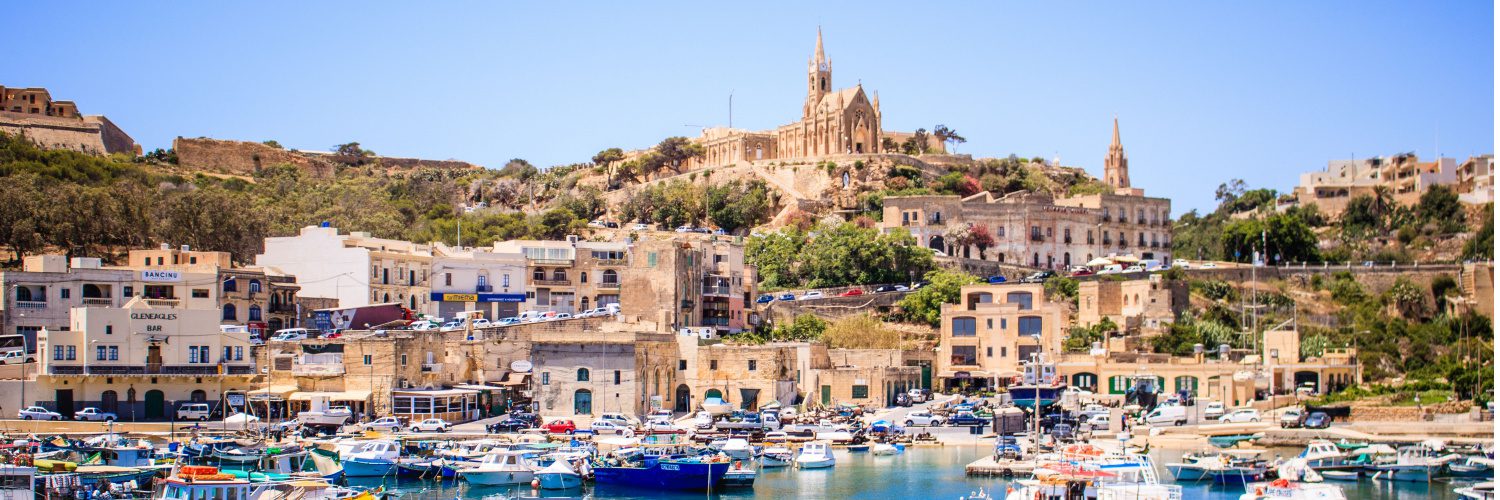Malta is steeped in history. Due to its strategic location guarding the trade-routes through the central Mediterranean, those scenic views beloved have served as important watch points for some of the great civilisations of history, and everyone from the Romans to the British have struggled to control these important island at some point or other.
8000 years of inhabited history has left a rich and varied landscape in Malta and while the islands’ are littered with mysterious pre-historic temples and lonely watchtowers, we’ve picked out five important vistas to guide you through some of the most important places in Maltese history.
Ġgantija Temple
People have been living on Malta for a very long time. Dating back to 3500BC, the Neolithic temple at Ġgantija, Gozo, is thought to be one of oldest structures on earth, even pre-dating the Pyramids of Giza.
Thanks to the numerous figurines and statues found on the site, modern archaeologists tend to think that the area was used by one of the many fertility cults that sprung up around Southern Europe and North Africa in the Neolithic period. However local Gozitan legend speaks of a giantess who ate nothing but broad beans and honey bearing a child from a common man. With the child hanging from her shoulder, built these temples and used them as places of worship.
St Paul’s Bay
A busy port on Malta’s northern coast, St Paul’s Bay (or San Pawl il-Baħar as it’s known to the locals) is arguably one of the most important sites on the entire islands. Legend has it, it was here that the apostle St Paul was shipwrecked in islands in 60AD, delivering Christianity to the island and ensuring that Malta gravitated towards Christian Europe rather than North Africa.
With Neolithic ruins scattered around the town’s outskirts, St Paul’s Bay was also an important seaport during the Roman occupation of the islands and remains of baths, roads, beehives and even anchors have been found in the bay or in digs around the settlement.
Most recently the inlet was home to the Italian Navy, whose ships were interned here after Italy’s surrender in 1943.
Mdina
Once the capital of Malta until the Knights of St. John took over the islands in 1530, Mdina owes most of its architectural elegance to the Arabs, who ruled here from 870AD until the Normans began their invasion in 1091. Dubbed the ‘silent city’ due to a strict no cars policy (except for emergency vehicles), the city is still one of the most evocative in Malta. With its high fortifications, narrow streets and beautiful cathedral of St Paul at its centre.
Withstanding the Arab and Ottoman invasions of the Middle Ages, it was heavily damaged in an earthquake in 1691 and Maltese architect Lorenzo Gafà who added distinct baroque flourishes.
Marsaxlokk
A traditional fishing village on the south coast of Malta, Marsaxlokk is a microcosm of Maltese life. Built in the Phoenician period, it served as a small village until the 19th century when the Maltese fisherman who traditionally lived inland and headed to the coast for work began to build their homes there.
Still one of Malta’s most important fishing ports, the coastal area surrounding the village is one of supreme natural beauty. Its many bays sheltered the Turkish fleet during their epic, yet doomed, attempt to seize the islands in 1565. Today it is most famous for its great swimming spots, including the stunningly remote St. Peter’s Pool.
The Grand Harbour, Valletta
Valletta‘s Grand Harbour is one of the great amphitheatres of Mediterranean history. It’s one of the most fortified places on earth, with most of the forts dating to the 16th and 17th centuries. At this time the port was the nerve centre for the Kinights of Saint John, who occupied the islands for over 250 years.
Some of the more recent scars are the result of the port being the focal point for the German and Italian bombing of Malta during the Second World War. Poignantly summed up in a remarkable painting by Leslie Cole this two-and-a-half-year-long blitz saw the harbour pounded daily and earned Malta the dubious honour of being the most bombed place on earth, until overtaken by Laos in the 1970s.
To get the best views, we recommend climbing up to the upper or lower Barrakka Garden. With views across the three cities, the ancient dockyards and the fort of St Angelo where the Maltese defenders famously held off the invading Turks during the epic siege in 1565.
Got a taste of Malta’s fascinating history? Here’s how to learn more: Flights to Malta | Malta Holidays | Hotels in Malta





